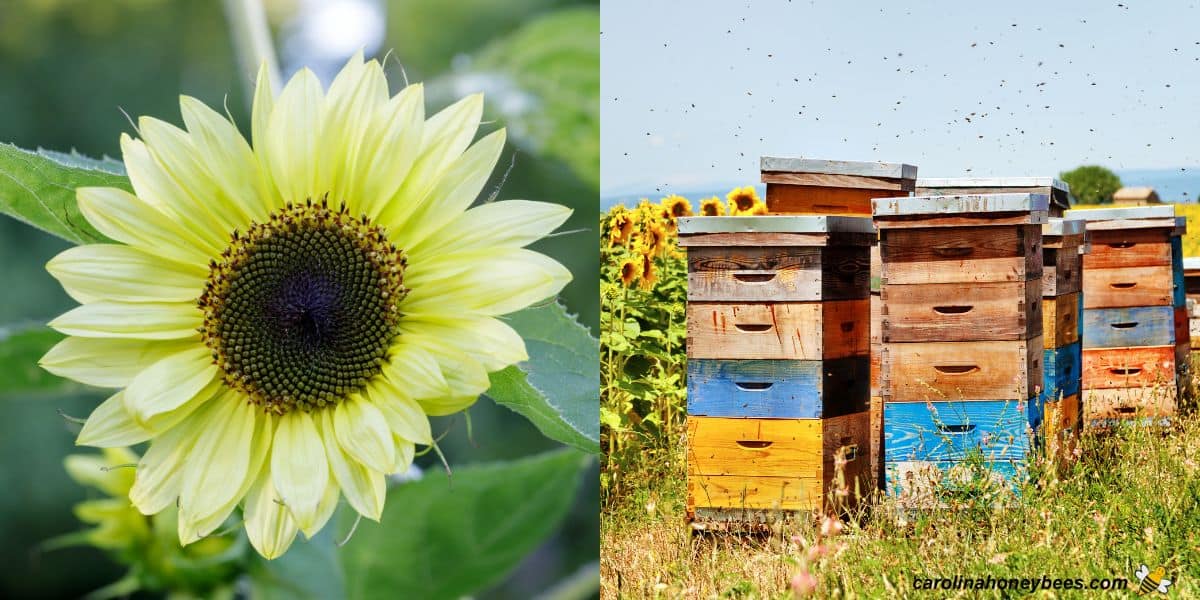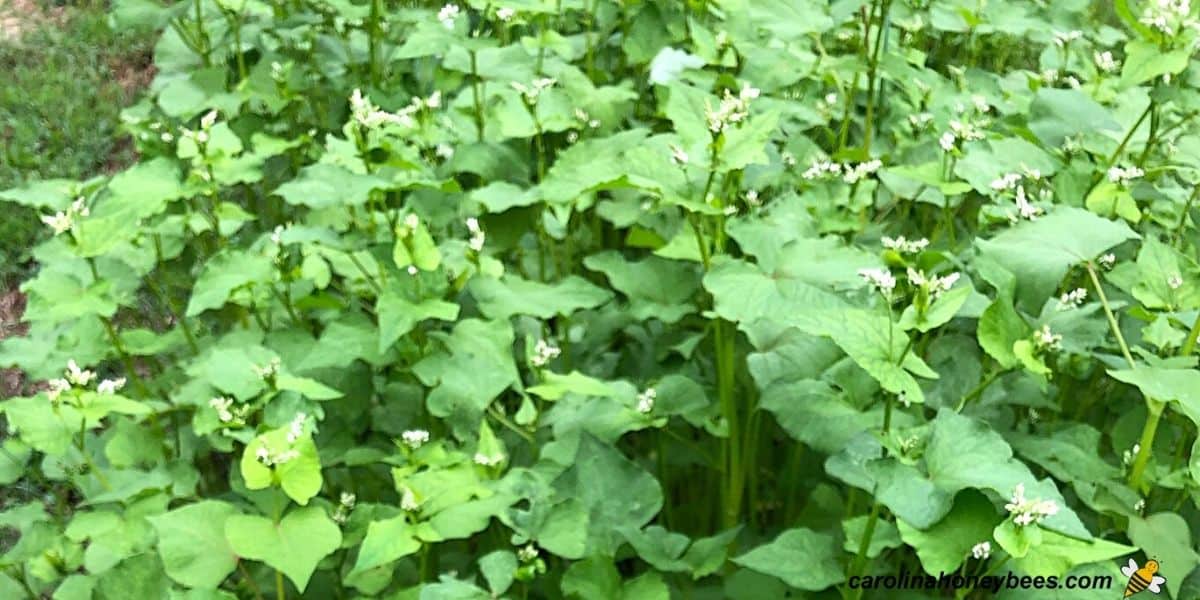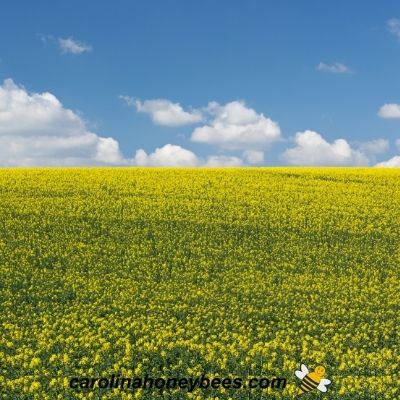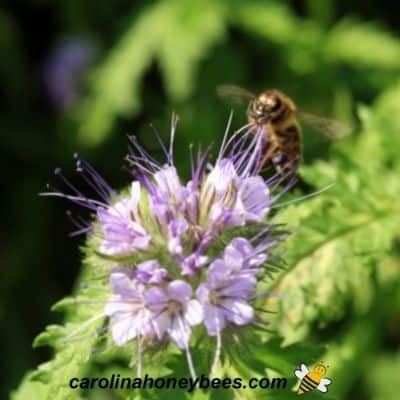This submit might include affiliate hyperlinks. As an Amazon Affiliate, I earn from qualifying purchases. Please learn my disclosure.
Honey bees collect nectar from hundreds of thousands of flowering vegetation. Some flowering vegetation are nice producers of candy nectar. These honey vegetation assist the colony produce meals for themselves, and hopefully some for the beekeeper. Selecting to incorporate a few of the finest vegetation for honey manufacturing in your property, might stimulate the bees to provide a fair bigger crop. Additionally they profit different pollinators within the space – contributing to a thriving ecosystem.

Wholesome honey bee colonies have to have a wide range of sources of pollen and nectar. Similar to people, they aren’t as wholesome with no numerous food regimen. After we think about the very best flowers for bees, these which might be identified to provide plentiful nectar play an vital function in bee life.
What’s a Honey Plant?
In regular conditions, foraging staff have all kinds of meals sources to go to. They collect nectar and pollen from blooming vegetation. Even a few of our frequent weeds feed bees.
Any flower that produces nectar – might be known as a honey plant – in probably the most normal phrases. However, in beekeeping terminology, the phrase honey plant refers to blooming vegetation identified to provide plentiful nectar.
The time period Melliferous is commonly given to them – which means “yielding or producing honey”. The copious quantities of nectar enable our bees to make honey for them and us.
Greatest Honey Crops for Bees
How have you learnt which as the very best honey vegetation on your area? Nicely, anytime we’re coping with a rising plant – rising situations and local weather play a task.
As situations differ – so does nectar manufacturing. However, listed here are a few of the most typical vegetation which have a fame for rising honey manufacturing.
Clover (Trifolium spp.)
Clover and bees appear to go collectively like chocolate and peanut butter. Virtually all kinds of clovers may be good vegetation for honey manufacturing.
With over 300 kinds of “Trifolium” flowers to select from, you’re positive to seek out one which does effectively in your local weather.
In actual fact, some areas of the US develop fields of clover to be able to produce massive quantities of Clover Honey (A specific mono-floral product like Tupelo or Sourwood Honey.
Soil and climate situations have an effect on the harvest however White Candy Clover and Yellow Candy Clover can yield round 200 # of honey per acre.
Even a small-scale beekeeper can complement bee forage by having a small patch of clover in a close-by discipline.
All bees will benefit from the blooms of white clover that seem within the garden over Summer time. June and July may be scorching and dry in my area and garden clover often is the solely factor in bloom.
This does assist hold the colonies from ravenous however just isn’t sufficient to provide a honey crop.
Lavender (Lavandula spp.)
Lavender is a bee pleasant plant that produces numerous nectar for honey manufacturing. The extremely aromatic blossoms are very enticing to bees.
Borage (Borago officinalis)
Each Borage and Tansy (Phacelia tanacetifolia) are members of the Boraginaceae household. Each are excellent sources of nectar for bees and should yield sufficient to provide a honey crop.
Their distinctive blue flowers are enticing to bees and supply a wealthy nectar supply. Borage may be grown in plots nearly anyplace.
Tansy is native to the Southwestern US and sometimes grown within the desert areas of California and surrounding areas.
Many sorts have a reasonably lengthy bloom season which implies sustained nectar for some time. If you could find a sort that grows effectively in your local weather, you need to think about planting some lavender on your colonies and your self.

Sunflowers (Helianthus spp.)
Sunflowers are not at all times a significant plant for honey manufacturing however they are often. Grown in a industrial operation beneath the proper rising situations, they will have a honey yield from 30-100# per acre.
And let’s be trustworthy, not a lot is extra stunning than a discipline of sunflowers. There massive simply accessible flower heads are very interesting to working bees.
Rising sunflowers to spice up your honey harvest is feasible on a smaller scale too.
Be sure you select a kind of sunflower that feeds bees – not all do. And having a option to hold the vegetation irrigated through the scorching Summer time will help.
Buckwheat (Fagopyrum esculentum)

Buckwheat should be included on this part of honey vegetation. Although it isn’t grown a lot commercially for the seed, buckwheat continues to be used as a canopy crop in some areas.
The ensuing honey usually makes the highest ten checklist for finest honey on the planet – despite the fact that it’s fairly sturdy and many individuals go away it for the bees.
Bees love buckwheat flowers and beekeepers generally develop a bit to complement late season nectar sources. I develop a small patch of buckwheat for bees on the finish of Summer time.
Mints and Salvias
Lemon Balm (Melissa officinalis) may be grown in a big pot or in a small discipline setting. This natural plant has been identified to produce a number of hundred kilos of honey per acre.
In actual fact, there are a lot of natural vegetation that assist feed bees. It is a win-win for the small homestead. An effective way to develop herbs for your self and fed the bees a bit on the identical time.
Mints are useful to bees although many of those vegetation needs to be tightly managed or they are going to escape. Most salvias are effectively behaved and do effectively in a big planting or as options in your yard.
Goldenrod (Solidago spp.)
Goldenrods are a member of the genus “Solidago“. There are lots of types of Goldenrod out there, you’re positive to seek out one which does effectively in your local weather.
In some areas, goldenrod is a significant honey plant. Not at all times a shopper favourite, the late season meals supply is helpful to hungry colonies.
An important factor about goldenrod for bees is the season of bloom. It’s finish of season bloom is likely one of the final true meals sources for many bees earlier than Winter.

Canola (Brassica napus)
Whereas bees will collect nectar from crops resembling turnip greens and even broccoli, canola is the winner within the Brassicaceae household.
A serious nectar supply, canola (additionally known as Rapeseed) makes use of bee pollination in lots of areas of the world embody Canada.
Pollination of canola is a significant supply of revenue for some industrial beekeepers.
On the draw back, canola honey crystallizes in a short time and generally is a drawback for beekeepers desirous to delay their harvest.
Additionally, the truth that many of the canola grown within the US is genetically modified is troubling to some.
Soybeans (Glycine max)
Soybeans are one other main crop that’s enticing to honey bees. These vegetation are largely self-pollinating and don’t depend on bee pollination.
However, some varieties produce nectar that’s excessive in sugar content material. So honey bees do forage in soybean fields.
Some beekeepers report harvesting soybean honey every so often, however there may be at all times the hazard of colonies being killed as a consequence of pesticide use.
After all, that is true in any agricultural setting and a particular hazard for migratory beekeepers.
Milkweed (Apocynaceae spp.)
Milkweed boasts over 55 completely different species. A few of them are so melliferous you can shake nectar from the plant.
Milkweed could be very useful to different pollinators too – not simply bees. Nonetheless, some varieties may be aggressive so hold that in thoughts whenever you select a spot to plant them.
Frequent milkweed is understood for being somewhat too glad in some areas. Nonetheless, you probably have the house to maintain it contained it’s a nice nectar plant.
To seek out the very best appropriate vegetation on your space – test the Xerces Society’s Regional Milkweed Guides.

Recognized Households of Nectar Producers
The members of the next plant households are generally used in most bee gardens as dependable producers of nectar.
Many are annual vegetation that should be reseeded every year however you can find some perennials too. There are even some nice bushes for bees together with fruit bushes and many others.
- Fabaceae (clovers, redbud, soybean, black locust)
- Lamiaceae (mints, sage, thyme, bee balm, basil, salvia, lavender, lemon balm)
- Brassicaceae (turnip greens, broccoli, canola)
- Asteraceae (sunflowers, dandelion, cosmos, echinacea, zinnias)
- Rosaceae (apples, peaches, crabapples, blackberry)
- Boraginaceae (borage, tansy)
Does Plant Choice Make a Distinction?
Some individuals say you’ll be able to’t plant sufficient flowers to make a distinction – because of the massive space bees journey searching for meals. However, this doesn’t cease beekeepers that hope to enhance honey manufacturing.
Positive, massive plantings can be probably the most useful. However, even smaller meals plots might probably end in a bigger honey harvest or life-saving meals shops for Winter.
Flowers use nectar to lure pollinators like honeybees, butterflies, native bees and bugs to the bloom.
Pollination helps the plant produce seed. However, not each flower wants assist from bees.

Not all Honey Crops are a Good Concept
In case you have these vegetation in your panorama, please don’t rush out to dig them up. Within the excessive majority of instances – all the pieces is simply wonderful.
Nonetheless, bees will collect meals wherever they will – even when the nectar is perhaps unhealthy for them.
In some conditions: nectar from azaleas, rhododendron and some others may be poisonous to bees. Don’t go ripping them out-but they aren’t the very best ones so as to add to your bee backyard.
Additionally, some invasive vegetation feed bees – some even enable a honey harvest – however they will not be finest for the ecosystem.
When you find yourself think about new flowers that entice bees, remember to consider the entire impression they could make on the atmosphere.
Lastly
What are the high vegetation for honey manufacturing? Nicely, that can rely to a level on the place you reside.
Planting for our bees is numerous enjoyable. You might not produce an enormous honey crop, however even small plots will help your colonies produce a bit extra honey this 12 months.
Bees have to eat a diverse food regimen. Don’t be afraid to incorporate some flowering bushes bees like or different plantings to complement the bee pleasant wildflowers that develop naturally.


